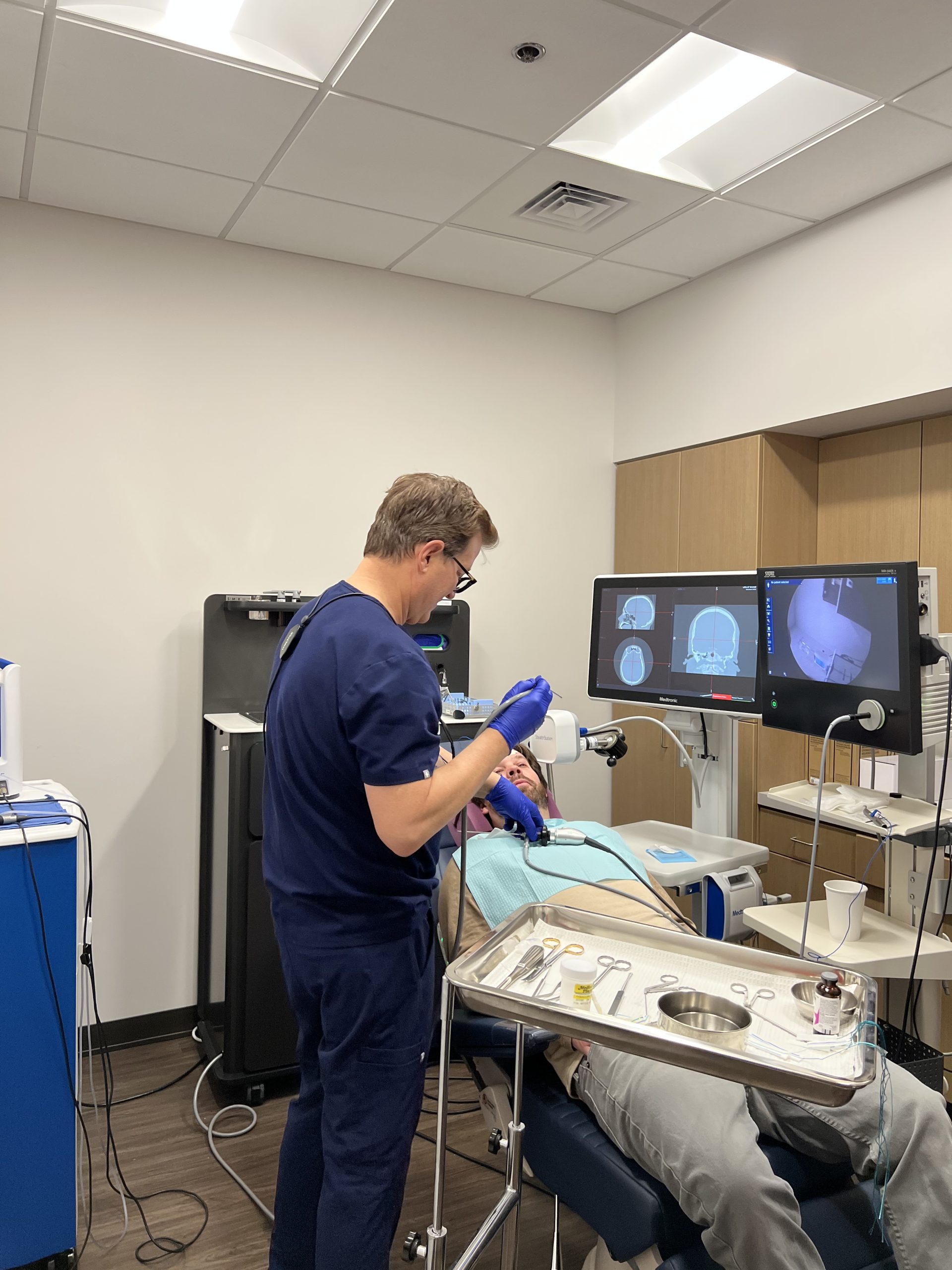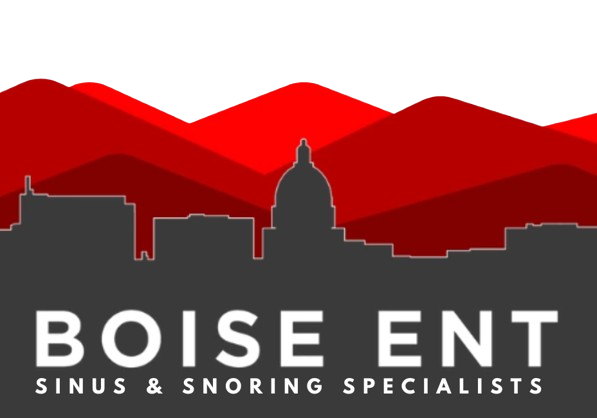On This Page: What is a Balloon Sinuplasty Procedure, Benefits of an In-Office Balloon Sinuplasty Procedure, What Conditions Does Balloon Sinuplasty Treat?, How Much Does Balloon Sinuplasty Cost?, What To Know About Balloon Sinuplasty Recovery, Contact Us
Approximately 37 million Americans suffer from sinusitis annually. Most sinusitis is manageable with natural remedies and can end after a few days of taking medication. However severe cases, referred to as chronic sinusitis, are challenging to deal with, leading to a lack of energy and overwhelming discomfort.
Medications can fail, forcing your primary physician to refer you to a nearby Ear, Nose, and Throat (ENT) doctor in your area for specialized treatment methods like surgery to clear your sinuses. Many people cringe at the sound of surgery. Luckily, there are new surgical procedures such as the balloon sinuplasty procedure that are less painful, and do not involve any cuts, incisions, or removal of bones or tissues.

What is A Balloon Sinuplasty Procedure?
Also known as “smart sinus,” or balloon sinus dilation, the balloon sinuplasty procedure is an endoscopic, catheter-based surgery technique used by ENTs for treating chronic sinusitis or rhinosinusitis, sinus inflammation, and extreme nose blockages. It is a relatively new sinus procedure, having been developed from the angioplasty, and becoming FDA-approved in 2005.
You might be wondering, ‘How does balloon sinuplasty work?’ Balloon sinuplasty is a safe and straightforward sinusitis procedure, considered minimally invasive because it does not necessitate any sort of incision. Instead, an experienced ENT specialist near you will put you under general anesthesia and insert a catheter with a tiny balloon attached at the end into your nostril until it reaches the blocked sinuses’ passageway.
The ENT specialist then fills the balloon with air which will help to expand, restructure, open, and widen the blocked sinus passages while preserving the lining of the sinuses. A saline solution is then applied or sprayed into the sinuses to remove any mucus or pus. The balloon then gets deflated, and the catheter is withdrawn. Your sinuses are fully open, and you can breathe normally.
What Conditions Does Balloon Sinuplasty Treat?
Balloon sinuplasty mainly treats chronic sinusitis with a 94% success rate for children and 100% among adults, as several studies have shown. When antibiotics don’t work, balloon sinuplasty can also treat:
- Blocked nasal cavities
- Chronic nasal discomfort or issues
- Chronic sinuses infections, and
- Persistent mouth odor and bad taste.
While balloon sinuplasty is the ultimate solution to some of the mentioned problems, it is advisable to seek the advice of your ENT for informed recommendations.
How Much Does Balloon Sinuplasty Cost?
The cost of a balloon sinuplasty procedure generally ranges between $2,000 and $7,000. This variation depends on several key factors, including whether the treatment is performed in an outpatient clinic or at a hospital, the geographic location of the medical facility, and the experience and qualifications of the ENT specialist or surgeon performing the procedure.
This estimated cost typically applies to patients without health insurance or whose insurance does not include coverage for balloon sinuplasty. Since it is considered a minimally-invasive and relatively innovative treatment for chronic sinusitis, some insurance providers may still classify it as experimental or not medically necessary.
However, an increasing number of insurance companies are beginning to cover balloon sinuplasty due to its effectiveness, safety profile, and positive patient outcomes. It’s important to consult with your medical insurance provider in advance to verify your coverage eligibility, including whether the procedure will be fully or partially reimbursed.
At Boise ENT Sinus & Snoring Specialists, we are happy to help you navigate these questions and provide cost transparency for patients considering this non-surgical alternative. If you’re seeking lasting relief from sinus congestion, or have additional questions about the pricing, insurance billing, or out-of-pocket expenses associated with balloon sinuplasty, don’t hesitate to contact our ENT near you.

Recovery After a Balloon Sinuplasty Procedure

Everyone’s body reacts or recovers differently after medical procedures. But recovery from balloon sinuplasty is faster and more comfortable than other surgical procedures. Discharge can be a few hours after a successful balloon sinuplasty. You can even resume your daily routine or go back to work within 24-48 hours as you recover.
But there are a few side effects such as dizziness, exhaustion, mild blood drainage, tender or congested sinuses a week following the procedure. There is no need to worry since these effects wear out after a few days. In case you feel some irritation, discomfort, or mild inflammation in your sinus passageways, suitable over-the-counter anti-inflammatory medications can work to ease these conditions.
Read our brochures about the Balloon Dilation, Balloon Sinuplasty and In-Office Balloon Sinuplasty Benefits.
Say Goodbye to Chronic Sinusitis with In-Office Balloon Sinuplasty at Boise ENT Sinus & Snoring Specialists
Chronic sinusitis is uncomfortable and frustrating. Boise ENT Sinus & Snoring Specialists is home to highly qualified and experienced ENT specialist Don J Beasley, MD. Our entire team is here to ensure you get the most personalized care for your sinusitis and strive to provide the very best balloon sinuplasty services. Contact Boise ENT Sinus & Snoring Specialists for a consultation to learn if balloon sinuplasty surgery is recommended for your chronic sinusitis.
We also offer balloon sinuplasty surgery for residents of surrounding communities like Nampa, and Meridian.
Is this procedure covered by insurance?
Yes. Idaho has excellent coverage for this minimally invasive procedure. Your doctor will get prior-authorization from your insurance carrier to verify your benefits. In many cases, patients can have this procedure done for as low as an office visit copay.
Does In-Office Balloon Sinuplasty hurt?
In the studies conducted using the Entellus balloon, the average pain score was 2.7. You will experience facial pressure and typically hear cracking sounds similar to and egg shell, which is normal. Should you experience pain at any time during the procedure, your doctor can adjust your anesthesia medication to maximize your comfort for a positive experience.
Will I be put to sleep?
No, general anesthesia is not administered. Patients will usually be given oral, topical and local medication as part of anesthesia protocol. You will be awake, similar to a dental procedure.
Do I need a ride to/from the office?
Yes. In most cases your doctor will prescribe an anxiolytic, such as Lorazepam, and an anti-nausea Phenergan. These are taken 1 hour before the procedure, so we recommend that you arrange transportation to/from the office and that you do not operate a vehicle during this time.
Does the balloon stay in?
No, once the balloon is in place it is dilated for a few seconds then deflated and removed. The “doorways” to your sinuses will be permanently remodeled and reshaped.
What are the most common post-op side effects?
Some patients may experience headache, nasal congestion, minimal blood/mucus drainage, and facial pain. This temporary and in most cases will resolve the day after the procedure.
How long will I miss work/school?
In most cases, patients can return to work/school the next day if not the same day. Your doctor will advise you of your limitations, if any.
How effective is the Balloon Sinus Dilation?
A recent study comparing Balloon Sinus Dilation to Functional Endoscopic Sinus Surgery (FESS) showed that patients had similar outcomes. OSBD is not inferior to FESS. Patients recover quicker and require less debridement, which means less time missed from work/school.
How long will the results last?
There is now sufficient data showing long term efficiency and indefinite results (beyond three years). Your outcome will typically depend on the severity of your sinus disease. There is very low revision rate for this procedure (less than 10%).
Is any tissue removed?
No, there is no tissue removal when dilating your sinuses. Your doctor will discuss possible removal of tissue with you only if you have structures in your nose that will make it difficult for him/her to perform the procedure.
How long will this procedure take?
Total start to finish time is typically around 1 hour. The anesthesia protocol takes longer than the procedure itself. Usually about 30-45 minutes. The actual balloon procedure takes about 10 minutes.
Will this cure my sinus disease?
No, unfortunately, there is no cure for sinus disease. For maximized results you should stay in compliance with any allergy immunotherapy, nasal steroids, etc that your doctor may have you on. This procedure will decrease your chances of a sinus infection and improve your quality of life by relieving associated symptoms, therefore making reducing infections, rounds of antibiotics and missed time from work.
